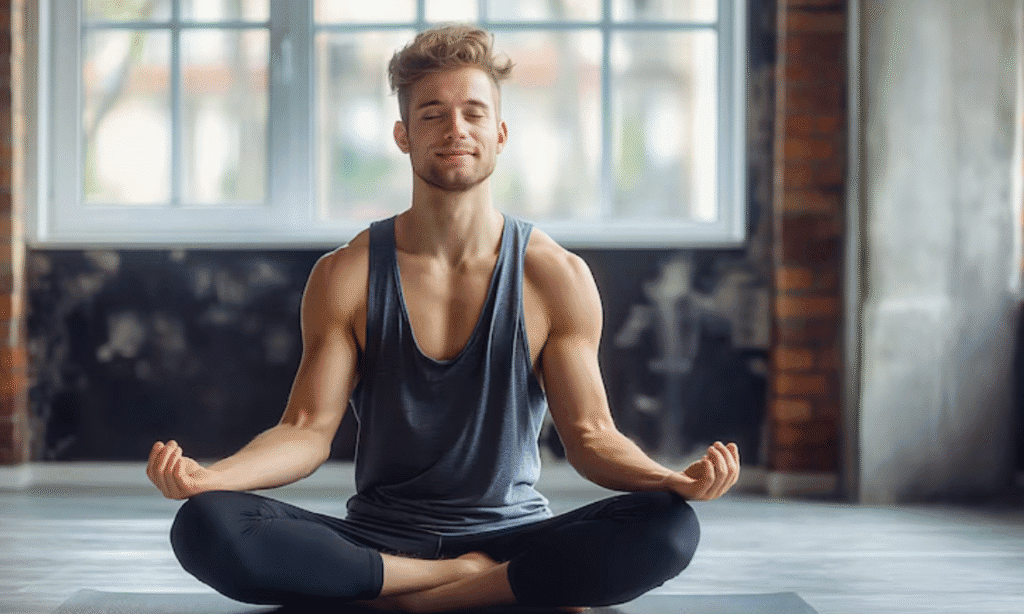If falling asleep or staying asleep feels like a nightly struggle, you’re not alone. Stress, screen time, and overstimulation are common modern culprits of poor rest. Fortunately, yoga offers a gentle and effective way to unwind, relax the nervous system, and prepare your body for deep, restorative sleep.
This article explores the connection between yoga and better sleep quality, and offers a calming evening sequence you can do right before bed.
🧠 How Yoga Supports Better Sleep
Sleep disorders are often rooted in stress, anxiety, and overstimulation. Yoga addresses these issues by:
- Activating the parasympathetic nervous system (“rest and digest” mode)
- Reducing cortisol and adrenaline levels
- Encouraging mind-body awareness
- Promoting physical stillness and emotional release
Studies have shown that regular yoga practice improves sleep latency, duration, and quality—especially in those with insomnia or high stress levels.
🌃 Evening Yoga Ritual: Preparing for Sleep
Create a soothing environment to get the most from your bedtime practice:
- Dim the lights
- Use calming essential oils like lavender or chamomile
- Play soft, ambient music or nature sounds
- Wear loose, comfortable clothing
- Unplug from screens at least 30 minutes before practicing
🧘♀️ Calming Yoga Sequence for Sleep
This 15–20 minute sequence helps transition from daily tension to bedtime tranquility:
1. Legs Up the Wall (Viparita Karani)
Benefits: Relieves tired legs, calms nervous system
- Lie on your back with legs extended up against a wall.
- Rest your arms by your sides, palms facing up.
- Breathe deeply for 3–5 minutes.
2. Child’s Pose (Balasana)
Benefits: Releases lower back tension, soothes the mind
- Sit back on heels, fold forward, arms stretched in front or by your sides.
- Let your forehead rest on the mat or a pillow.
- Hold for 1–2 minutes.
3. Reclining Butterfly Pose (Supta Baddha Konasana)
Benefits: Opens the hips and heart, slows mental activity
- Lie on your back with soles of the feet together, knees falling outward.
- Support knees with pillows or blocks for comfort.
- Place one hand on your belly, one on your heart.
- Stay for 3–5 minutes.
4. Seated Forward Bend (Paschimottanasana)
Benefits: Stretches spine and hamstrings, quiets the mind
- Sit with legs extended and gently fold forward over your legs.
- Don’t force the stretch—relax into it.
- Breathe deeply for 1–2 minutes.
5. Supine Twist (Supta Matsyendrasana)
Benefits: Releases spinal tension, aids digestion, calms the belly
- Hug one knee to chest, gently twist to the opposite side.
- Extend arms in a T-shape and gaze over the opposite shoulder.
- Hold each side for 1–2 minutes.
6. Corpse Pose (Savasana) with Body Scan
Benefits: Promotes full-body relaxation and prepares for sleep
- Lie flat on your back with arms and legs relaxed.
- Slowly scan your body from head to toe, softening each area as you go.
- Stay here for 5–10 minutes, or drift into sleep if you’re ready.
🌬️ Breathwork for Sleep
Alternate Nostril Breathing (Nadi Shodhana)
- Balances both hemispheres of the brain
- Calms the mind and body for restful sleep
- Practice for 3–5 minutes after your yoga sequence
🛌 Additional Tips for a Yoga-Inspired Sleep Routine
- Be consistent: Try the same routine every night to build a sleep ritual.
- Avoid vigorous yoga late at night—opt for slower, grounding practices.
- Journal or meditate after your practice to release lingering thoughts.
- Drink a cup of warm herbal tea (e.g., chamomile, tulsi, or valerian).
✅ Final Thoughts
In a world full of stimulation and stress, yoga is a powerful antidote to sleeplessness. By incorporating just a few calming poses and breathwork into your evening, you’ll not only sleep better but wake up feeling more refreshed, centered, and balanced.




